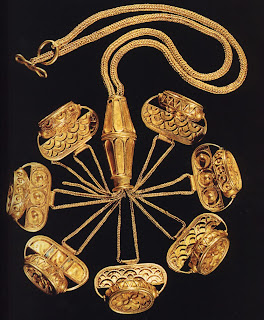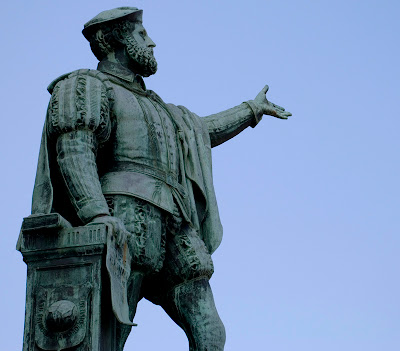The War of Jenkins' Ear was a conflict between Great Britain and Spain that lasted from 1739 to 1748. Under the 1729 Treaty of Seville, the British had agreed not to trade with the Spanish colonies except under extreme conditions restricted to the Annual Ship and the Asiento slave trade.The commercial class in England demanded access to the lucrative Spanish markets of the Caribbean Basin and Spanish colonists desired English goods so a burgeoning Black Market had developed. By the terms of the treaty, the Spanish were permitted to board British vessels in Spanish waters. After one such boarding in 1731, Robert Jenkins, captain of the ship Rebecca, claimed that the Spanish coast guard had severed his ear. Jenkins exhibited his pickled ear to the House of Commons. This only served to heighten the "war fever" now developing against Spain which was also driven by the desire of commercial and military domination of the Atlantic basin. To much cheering, the British Prime Minister, Robert Walpole, reluctantly declared war on October 23, 1739. Vice-Admiral Vernon was an active and ardent supporter of war against Spain and spoke for offensive action both in Parliament and before the Admiralty.
The Spanish Caribbean basin trade had a network of four main ports: Vera Cruz, Cartagena, Porto Bello (now Portobelo) and the main port through which all the trade of those three came through, Havana. On November 22, 1739 one of the first actions of the War was the British capture of Portobelo which was part of the then New Granada. The attack was part of an attempt to damage Spain's finances. The poorly defended port was attacked by six ships of the line under Admiral Edward Vernon. The relative ease of this capture, although it quickly returned to Spanish control after Vernon's fleet departed, caused jubilation in England and resulted in Vernon being given command of a very large naval contingent consisting of one fourth of the British Royal Navy in ships and sailors of a major land and sea amphibious expedition under the overall command of Lord Cathcar. Unfortunately for British hopes Lord Cathcart died en route and it remained unclear who was then in command overall.
The despatch of the large fleet and troop contingent was primarily for political reasons as the government wished to gain credit for Vernon's hoped for future successes by supplying him with an overwhelming force. Vernon, himself, was not convinced that a large-scale attack on a heavily fortified city would be successful as his smaller Portobello assault had been. However, he could not refuse the orders to attack a major port when he had such a large force at his command.
Britain's objective was to capture and permanently retain Spain's four ports of the Caribbean basin and thereby acquire Spain's American empire. However, Britain had no place to build and refit ships in the Caribbean as Spain did with the dockyards at Havana and without a dockyard no fleet could remain in the area for any length of time without breaking down. Quick capture was imperative but England's divided ministry left the course of the campaign up to Vernon and others at a Council of War held in Jamaica. They decided on Cartagena as their initial objective as it was a good port and to windward of Britain's existing Caribbean bases.
The battle of Cartagena pitted a British invasion force of at least 26,400 in 186 ships including: 29 Ships of the Line; the rest of all types armed with 2,000 canon against the 3,000 Spanish and colonial regulars and 600 Indian archers, fighting from six frigates and massive fortifications — under the command of the Viceroy Sebastián de Eslava, Don Melchor de Navarrete, Don Carlos Des Naux, and Don Blas de Lezo.
The expedition arrived off Cartagena on March 4 and after a couple of weeks bombardment the initial attack made by land and sea at Boca Chica, the Little Mouth, on April 5. This channel ran between two narrow pennisulas and was defended on one side by the fort of St. Louis, Boca Chica Castle, with four bastions having some 80 cannons, on the other side of the channel an earthwork battery of 15 cannon all supported by redoubts. A boom strectched from the island of La Bomba to the southern peninsula on which was Fort St. Joseph with 21 cannon. Also supporting the entrance were the 6 Spanish line ships. The British army forces on land established a battery and made a breach in the main fort while part of the fleet assisted and another part of the fleet engaged the Spanish ships which, ultimately, Lezo tried to scuttle and set on fire. Two Spanish ships partially blocked the channel and one was captured by the British before it could sink. An advance was made on the breach, however the Spanish had already retired to fortifications in the inner harbor on the March 24. The landing force re-embarked and the harbor then entered. The next council of war decided to attempt to isolate Cartagena from the land side by an assault of Fort St. Lazar. The assault failed with a loss of 600 casualties.
Don Blas de Lezo's plan was that, given the overwhelming force against him, he hoped to conduct a fighting withdrawal and delay the British long enough until the start of the rainy season at the end of April. The tropical downpours would effectively end campaigning for another 2 months. Also, the longer the enemy had to remain mostly at sea and in the open the more likely it would become that insufficient supply, discomfort and especially disease would become his allies and the deadly enemies of the British. An experienced, wily and tenacious Spanish Naval commander, de Lezo, whose previous career was daring and spectacular , made use of every advantage, strategy and tactic available to him. Cartagena's defensive fortifications had been repaired and improved over the past year. Although De Lezo was pressed to the limit, his plan bore the hoped for fruit. The rains came and the British had to board their ships, where close quarters made disease even more deadly, and by April 25, Vernon resolved to retreat to Jamaica and by mid-May they were gone.
The battle lasted 67 days and ended with the British fleet withdrawing in defeat, having lost 18,000 men, about half of them to disease, and 50 ships. Most of the American colonists who had volunteered, lured by Vernon's promises of mountains of gold, died of yellow fever, dysentery, and outright starvation, and those who returned home injured, including Lawrence Washington (who renamed his Virginia plantation after Admiral Vernon) had little to show for their efforts.
In the middle of the battle, when the Spanish forces had retreated from different defense points to regroup in the larger Fortress of San Felipe de Barajas, the British dispatched a messenger, Captain Laws, to England. He informed the King of their victory on May 17. A special medal was even minted in London to commemorate this "victory" with a drawing of Admiral Vernon looking down upon the "defeated" Spanish admiral, Don Blas de Lezo who appears kneeling down. A contemporary song was composed by a sailor from the Shrewsbury that prematurely celebrated the victory:
VERNON'S GLORY; OR, THE SPANIARDS DEFEAT.Being an account of the taking of Carthagena by Vice-Admiral Vernon..."...and the town surrender[ed]To Admiral Vernon, the scourge of Spain". When the embarrassing news of the outcome reached London some weeks later, the British government removed these medals and prohibited the news from being disclosed and published. Following the news of the disaster Robert Walpole's government soon collapsed and Spain retained control over its extremely lucrative colony, and over a strategic port in the Caribbean that helped secure the defense of the Spanish Main. News of Britain's defeat reached Europe at the end of June, 1741 and had immense repercussions. It caused Britain's George II, until then Austria's staunch supporter, who had been acting as mediator between Frederick the Great of Prussia and Maria Theresa of Austria over Frederick's seizure of Silesia in December of 1740 to withdraw its guarantees of armed support for the Pragmatic Sanction. That encouraged France and Spain, the Bourbon allies, revealed to also be allied with Prussia, to move militarily against a now isolated Austria. A greater and wider war, The War of the Austrian Succession, was now inevitable.
The failure to take Cartagena caused the naval forces assigned to Vernon to remain in the Caribbean longer. This resulted in the weakened Mediterranean squadron being unable to prevent the Spanish from twice convoying troops totalling 25,000 to Italy in November and December of 1741. It wasn't until Commodore Lestock, commander of one of Vernon's divisions at Cartagena, returned to Europe with ships from the Caribbean fleet that England regained control of the seas in the Mediterranean.







 foundations. Alfonso VIII and his wife, Eleanor of Plantagenet made this Alcázar their principal residence and much work was carried out to erect the beginnings of the stone fortification we see today.
foundations. Alfonso VIII and his wife, Eleanor of Plantagenet made this Alcázar their principal residence and much work was carried out to erect the beginnings of the stone fortification we see today.













